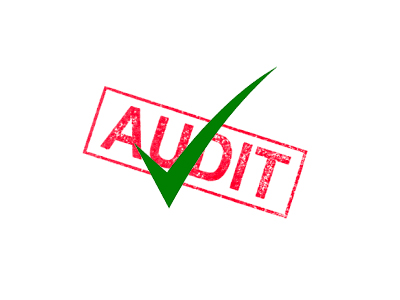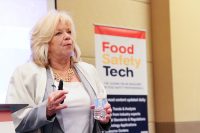Whether you work in food manufacturing, distribution or retail, pests are both a fact of life as well as a regulatory disruption. At the same time, pest management solutions aren’t always clear-cut: While there are a variety of effective strategies employed by pest management professionals (PMPs) servicing the food industry, industry challenges—shifting regulatory standards, a lack of proper documentation and more—can complicate the process. For these reasons, short-term rodent problems can become long-term logistical nightmares, leaving food manufacturers in an undesirable situation when a third-party food plant auditor arrives.
Fortunately, emerging technologies in pest management practices are helping facility managers streamline their food and beverage quality assurance processes, reducing the risk of product loss, regulatory action, improper brand management and more. Specifically, electronic remote monitoring (ERM) allows PMPs to detect and monitor rodents in real time, providing you with important information to help reduce risk and increase audit compliance. As such, the value of food safety pest management strategies that incorporate ERM systems is only growing. Seeking out PMPs who use ERM allows you to invest in technologies that protect your margins, ensure the quality of your product and, ultimately, safeguard your most important asset—your reputation.
Modernizing Pest Management With ERM
At first glance, it might seem like pest management practices haven’t drastically changed since they were first implemented in the food manufacturing industry. Many rodent trapping systems remain similar to their original design: Devices designed to trap or kill that must be individually inspected and serviced by professional technicians. Technicians must then relay any risks to facility managers, who have to determine if additional resources are needed to avoid product loss or audit-based infractions.
Upon closer examination, it’s clear that while pests themselves have not significantly changed, both the pest management industry and the modern food supply chain have become increasingly complex. Food facility managers must contend with increasingly stringent food safety standards, and PMPs must rise to meet these needs with evolving pest management strategies.
In many ways, ERM technologies are the structural pest control industry’s response to these challenges, providing technicians with real-time notifications about rodent behavior and allowing them to make risk-based assessments that identify and treat problems before infestations occur. Unlike pest control strategies that rely on periodic service visits from technicians, PMPs who utilize ERM technology can monitor pest activity around the clock, 24/7/365, in virtually any environment. Instead of monitoring individual traps, PMPs can use ERM technology to know exactly when and where pest activity occurs, including in hard-to-monitor areas such as drop ceilings, crawlspaces, shelving undersides and other traditionally overlooked spaces. Technicians then receive valuable analytics from each trap they install, as well as documentation and reporting, that help managers achieve audit and regulatory compliance.
FSMA and ERM
In 2015, the FDA issued the final component of preventative control for human food under FSMA, officially enacting legislation that requires food safety plants to focus on risk-based pest prevention instead of reactive pest control strategies. As a result, quality assurance professionals and facility managers are often tasked with reallocating personnel toward proactive pest control activities in addition to their day-to-day responsibilities.
In many ways, ERM systems go hand-in-hand with FSMA and GFSI regulations. While preparing for a situation that hasn’t yet occurred can be a costly and time-consuming process, ERM has helped PMPs develop custom pest management strategies that assess and control situations in accordance with FSMA and other auditing firm guidelines. In many ways, ERM can provide all parties—PMPs, in-house auditors and third-party regulators—with a track record of pest history that all parties can cross-reference when assessing a facility.
From Risk-Averse to Risk-Based
When it comes to food safety rules and regulations, the only constant is change. In the structural pest control industry, auditors have historically implemented strict guidelines about trap placement that are frequently changing: For instance, traps should be placed every 10, 15, or 20 feet, regardless of facility susceptibility to various pest conditions. Failure to comply with regulations can result in point deductions on audits, even if the conditions that might lead to an infestation are not present. As such, food processing plants often choose to abide by the most stringent audit guidelines imposed upon them by other parties, such as retailers. By utilizing ERM technologies, food safety and quality assurance professionals can use additional pest monitoring analytics to focus on specific compliance issues, rather than spending additional time and money on other strategies.
Additionally, ERM allows PMPs to focus their efforts not only on weekly service visits and station checks, but also on important tasks, including assessing facility vulnerabilities, tracking rodent access points, and providing consultation and additional management strategies to their client—you.
Approaching the Audit with ERM
Food plant managers and retailers alike know that auditor approval is everything. Because ERM is a fast-developing technology, many quality assurance managers and facility owners are curious to know if ERM is audit approved. In truth, there are many kinds of audits, each with different goals, assessment techniques and regulatory standards. When it comes to audits, the gold standard is not necessarily the assessment of the facility and production line itself, but rather how well the assessment matches records kept by the food production plant.
To this end, ERM might be the answer to a streamlined audit process. No matter what kind of audit a plant is currently undergoing, ERM allows PMPs to provide records auditors need to verify that all systems are working properly. ERM can mean the difference between a streamlined process and a laborious audit, acting as a documentation system that helps officials conduct a PMP-verified “second-check.” This kind of verification is invaluable in an industry where there are already more than enough regulatory categories to consider without having to further worry about potential pest infestations.
ERM-Oriented Solutions
Thanks to the many advantages they offer, ERM and other remote pest monitoring technologies are growing in popularity. Many facility managers appreciate that ERM allows them to assess pest activity, prevent infestations before they occur, gather data that helps them remain industry-compliant, and acquire and share information with additional parties. If you’re a facility manager, quality assurance professional or other food safety decision-maker interested in the opportunities ERM technologies provide, consider starting the conversation about your pest prevention system with your PMP and how ERM might help improve it.
Trust, But Verify
There is an overwhelming consensus in the pest control industry that technology should be developed to provide end-users with more information. ERM systems are a natural extension of this belief, providing each component of the food production and distribution supply chain—manufacturers, distributors, retailers, quality assurance officials, technicians and others—with more data about how pest control decisions are made. Without data, it can be difficult to ensure technician service visits end in greater transparency about the issues facility owners will face as they prepare for an audit.
Fortunately, ERM can help provide the level of trust and assurance plant managers need to feel confident in their day-to-day operations. ERM is an important step forward for manufacturer-regulator relations, which require a strong combination of data, trust and transparency to ensure that communication systems don’t break down. After all, there are many industries in which miscommunication can lead to catastrophic consequences, and food production is no exception.
While each manufacturing facility, processing plant, distribution center, storage warehouse and retail outlet is different, none are insusceptible to pest infestations, and none can avoid audits required to keep them compliant. Because rigorous oversight is crucial for food producers and consumers alike, working with your PMP to develop pest monitoring strategies that utilize ERM systems and other cutting-edge technologies should be part of your larger pest control consideration process.
In the end, the pest infestation that causes the least damage to your product, profit potential and industry reputation is the infestation that never occurs.























